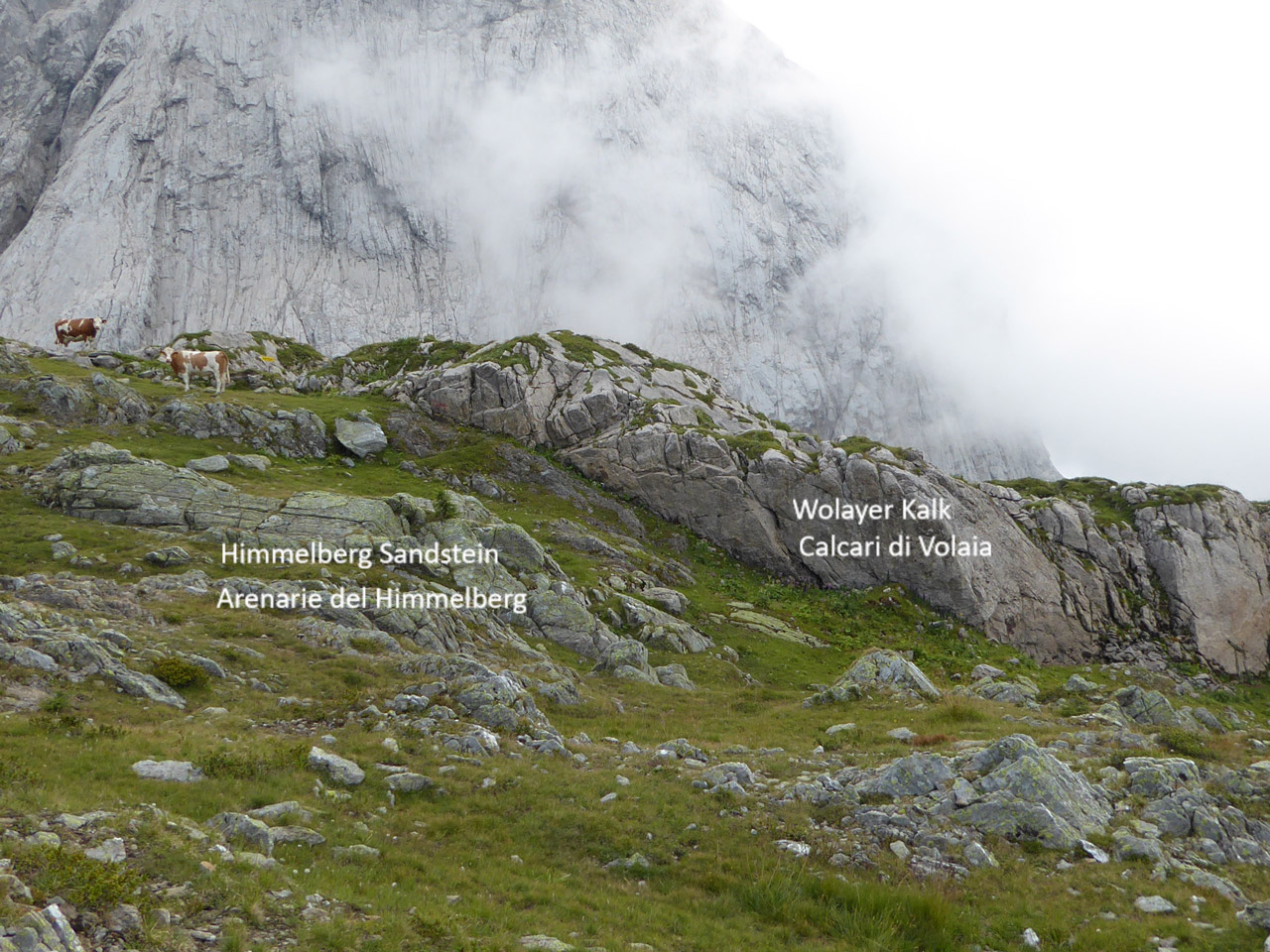Here you can see the oldest rocks of the Geotrail: the Himmelberg-Formation sandstone and the Wolayer-Formation limestone. Both deposited during the Upper Ordovician. The first one, grey-green represent fluvial-deltaic deposits, poor in fossils and mainly composed of quartzes. The grey rocky ridge on the southern side is younger and rich in marine environment fossils. You can distinguish sandstones from limestone because of the plants covering these rocks. They are mainly Rhizocarpon geographicum, a lichen that prefers siliceous soil (sandstones).
An interesting point is 100 meters far from here, in direction South-West, outside the route. There is a trench dug during the 1st WW. The grey limestones of the Wolayer Formation are in direct contact with the red ones of the Cocco Formation. The former are around 450 million year old, the latter 430. The sediments deposited in this time span are therefore missing. This lack is probably due to a lifting of the sea floor and an almost simultaneous lowering of the sea level during a glacial phase. The Cocco Formation rocks are rich in orthoceratids. In the Limestone of Volaia there are many fossil remains of peduncles and arms of cystoids (similar to sea lilies).

